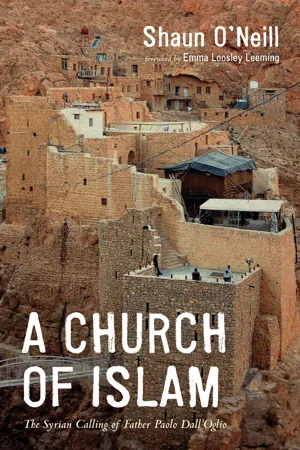
- 164 pages
- English
- ePUB (mobile friendly)
- Available on iOS & Android
About This Book
In the final decades of the last millennium, a Jesuit from Italy came across the ruins of an abandoned monastery in the Syrian Desert. It was to be the start of a forward-thinking Catholic religious community called Al-Khalil that would celebrate hospitality and friendship as its guiding pillars, bringing together Christians and Muslims from across the region during troubled times. Father Paolo Dall'Oglio and the interfaith dialogue he promoted in the monastic outpost of Deir Mar Musa near Damascus would attract people from all walks of life. The outbreak of war in 2011, powerful governmental and religious opposition, and the mysterious disappearance of the politically outspoken Father Paolo may have curtailed his work, but the progressive community he left behind continues to touch the lives of people across religious divides--within and outside Syria.In this pioneering work in English, part ethnographic study, part creative nonfiction narrative, Shaun O'Neill traces the life and legacy of the irrepressible Italian. He explores the importance of cross-religious understanding and moral leadership in an increasingly polarized world driven by religious and political fanaticism. It is a celebration of religious diversity against the odds and a fascinating glimpse into the character of Al-Khalil's bombastic, larger-than-life leader--Father Paolo Dall'Oglio.
Frequently asked questions
Information
Chapter 1: Tilling the Soil
First Impressions
Table of contents
- Title Page
- Foreword
- Acknowledgments
- Abbreviations
- Prologue
- Chapter 1: Tilling the Soil
- Chapter 2: Planting Seeds of Friendship
- Chapter 3: Al-Khalil’s Hospitality
- Chapter 4: Harvest
- Chapter 5: Brotherhood and Solidarity
- Conclusion
- Epilogue
- Current Situation Across the Community of Al-Khalil
- Bibliography